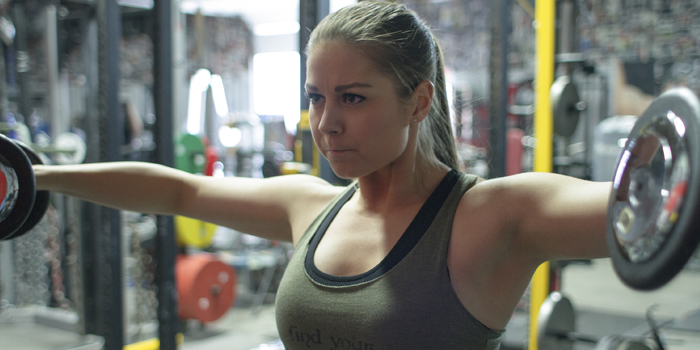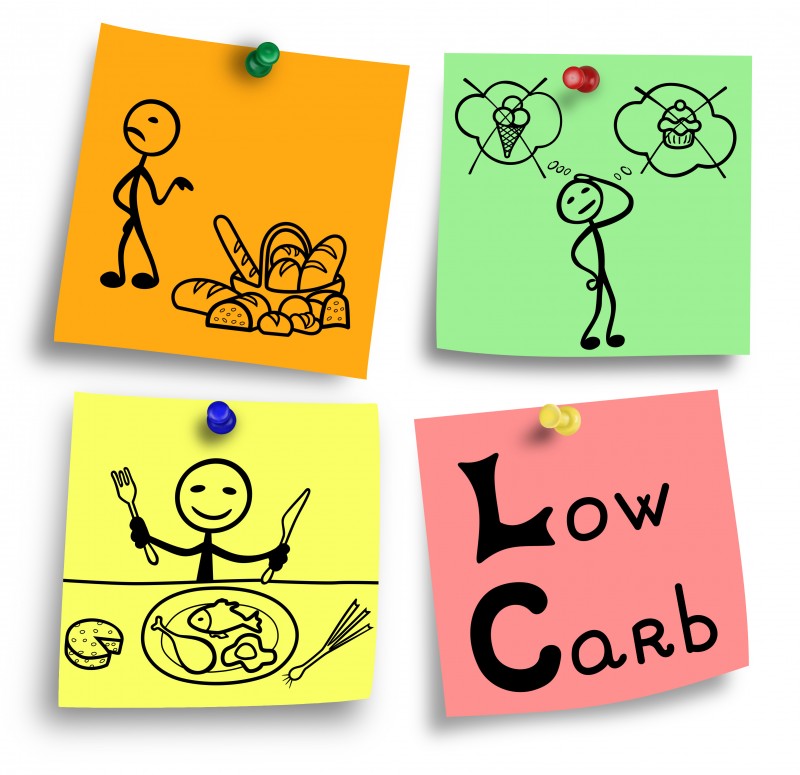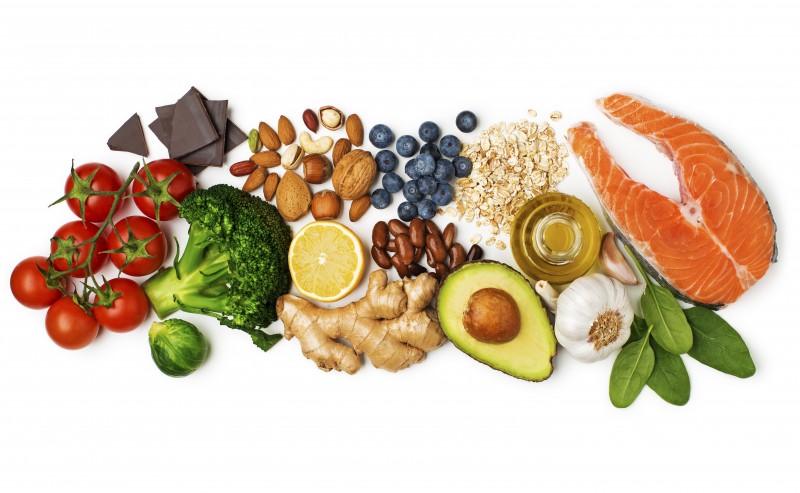
If you have read my articles over the years or follow me on social media, you know I love calling out bullshit. So here we are, another day of turning on my bullshit detector for you guys to keep you on the right track.
In this article, I dive into the top-4 pieces of fat loss advice that are complete garbage and why they’re garbage. So, buckle up, buttercup, and grab some popcorn.
RECENT: From a Side Hustle to a Full-Time Job: Building Your Online Coaching Business
1. Cutting out carbs and sugar is the best way to lose fat.
The truth is if you want to lose body fat, the only thing you must cut down is your calories. Removing a food group or macronutrient in any sense (low-fat, low-carb, low-sugar, whole foods only, no dairy, etc.) creates limitations on what you can eat, therefore initiating a caloric deficit by default. The only reasons you should remove a food completely are if you have an intolerance to it, are placed on a specific medical-related diet from a physician, or if a food can be a trigger for you (i.e., binging). Other than that, there really is no reason to cut out major food groups or macronutrients.
Cutting carbs does not have magical fat loss power; it simply creates a caloric deficit that could have been created without cutting carbs as well. The one benefit I do like about lower-carb or carb-conscious advice is that the American diet is filled with too many carbs in the first place. So, when folks cut down on carbs, it actually brings them down to a healthier/more ideal intake, but not necessarily true low-carb or keto, for that matter.
However, what I don’t like about this advice, other than there being no credit to a caloric deficit, is that it creates a restrictive mindset and labels an entire macronutrient as bad. This mindset, down the line, is going to create an unhealthy relationship with food and staying low-carb forever is very unsustainable for most people. They will eventually consume carbs and feel like a failure.

chase4concept © 123rf.com
Not cutting out specific food groups or macronutrients and simply shooting for a caloric deficit gives a more flexible and abundant approach to fat loss. You don’t have to necessarily give up anything, just decrease the amount in which you consume it.
This method might not sound as sexy, but it works long-term and that is where people fail. Our country doesn’t have a weight loss problem; we have a weight maintenance problem. When we do lose weight, we can’t keep it off! And a lot of that has to do with the method in which we lost the weight in the first place.
2. You should do a cleanse or detox to kickstart fat loss.
The reason why this advice is so popular is because folks who did a detox or cleanse may have noticed pretty rapid weight loss in the first week or two. This is exciting, right? Well, notice how I said weight loss, not fat loss.
Most cleanses and detoxes simply just make you shit and piss a ton. They are filled with diuretics, magnesium, or various herbs that just make you shit. So you aren’t losing body fat at all — just fecal volume and water weight. This does not stimulate fat loss, either. It might make you excited because the scale went down, but it is not fat mass you are losing. As long as you have regular bowel movements, a cleanse or detox is neither necessary nor helpful to lose fat more efficiently.
Also, the “toxins” in your body are not keeping you fat. If your liver works, let it do its job. It does not need a $50 supplement to come to the rescue. Now, if you are experiencing chronic bloating, consult with your doctor.
Cleansing over and over again is not the answer. You could be dealing with an autoimmune disorder, a food allergy, IBS, hormonal imbalances, etc. So instead of repeatedly using a self-cleanse from Walmart, speak to a physician and get your shit together — literally.
3. You should train for a marathon.
I hear this advice given a lot especially when I speak to new clients during our initial consult. Now, I am not saying training for a marathon or any endurance event is bad! If it is a bucket list item for you, by all means, have at it!
However, when we look at fat loss, we want to go about it efficiently and effectively. Research and science show us how the body responds to certain training methods over time, so we can use this information to provide our bodies with the appropriate stimulus for our goal.

ammentorp © 123rf.com
The main problem with performing moderate steady-state cardio over a long period of time has to do with how our bodies adapt to that type of training from a physiological level. The reason long-distance running is less favorable as a fat loss tool is that our bodies easily adapt to moderate steady-state activity and we become more metabolically efficient over time. I speak a lot on this point in a past article, “Are You a Prius or a Ferrari?” Becoming more metabolically efficient allows us to burn FEWER calories for the SAME amount of workload over the course of time.
I mean, think about it. From a survival standpoint, how long do you think our species would have survived if we constantly burned more calories consistently for the same amount of work? Metabolic adaptation is a survival mechanism.
Knowing this, we can be smart about how we train to keep us as inefficient as possible, which means burning more calories with less adaptation. So when cardio is added as part of a fat loss phase, High-Intensity Interval Training (HIIT) seems to work best for most people overall because our bodies do not adapt to it as quickly which we have seen in research.
To be clear, we adapt to everything to an extent — even HIIT. But with HIIT, we have more longevity with our inefficiency. Granted, your fat loss progress should mainly be coming from your nutrition; however, sprinkling in some HIIT over time usually puts the icing on the cake and helps us get the job done.
Furthermore, I find that fat loss can absolutely be achieved efficiently when someone pays attention to their Non-Exercise Activity Thermogenesis (NEAT) levels. This is the unsung hero of fat loss. NEAT refers to your daily activity that is not sleeping, eating, or exercising. For example, this could be yard work, cleaning, fidgeting, typing, taking the stairs instead of the elevator, etc. Increasing your NEAT levels over time adds up and can be the difference between reaching your goals and not.
We do not burn as many calories during a workout as we think, so increasing NEAT levels is huge, and it doesn’t require us to recover like HIIT does. So don’t be lazy and think your workouts are the only activity you need in a day.
4. Just eat healthy! You don’t have to track calories, silly.
Last but not least, this is probably the worst advice of all. Granted, we don’t live in the healthiest country by any stretch, but from my experience, I don’t have clients knocking on my door because they are eating complete shit; they are usually just eating too much. It is very common for me to have clients eating what their perception of healthy is, and still be overweight.
READ MORE: The Basics of Macronutrient Tracking
The most efficient way to learn about what intake your body needs is to track and measure. You can bash macro and calorie tracking all you want, but in reality, all tracking is just data! You simply learn how your body responds to a specific intake (stimulus), and with that information, you can make changes to elicit the result you want.

Dusan Zidar © 123rf.com
Say you track macros and calories for a month and see on average your daily caloric intake was 3,500 calories and your weight stayed the same. Sweet! You now have a starting point!
We can gather from that information that 3,500 calories keep you at maintenance, so if you want to lose weight what do you do? Decrease calories to initiate a deficit. You do not have to decrease by much, either; slow and steady wins the race. Usually, for a male, I will make an initial decrease of around 500 calories, and for a female, typically around 200 calories.
Now, this varies strongly person to person, but overall, you can get away with bigger jumps with a male since they are typically eating more calories to start with. However, for women, I tend to drop things a little less aggressively, and for some women, I will need to actually increase their calories at first before we even initiate a fat loss phase.
It is all very individualized, but what tracking does is give you direction. Would you travel across the country with no GPS and zero clues on how to get there? No! So why would you use that logic for fat loss? Macro and calorie tracking is simply a map to your destination.
There is plenty of bullshit advice out there, so who knows, maybe I will write a Part 2! But for now, this is a good start, and I hope this steers you clear of the zealots and fitspos out there spitting this shit advice.
Before I end this article, I want to share a few resources with you where you can find solid advice. First of all, elitefts.com. Our athletes, coaches, and columnists all know what they are talking about, so listen to them.
Second, the International Society of Sports Nutrition has FREE peer-reviewed research on their site (sportsnutritionsociety.org) about strength training, nutrition, body composition, performance, and more. You name it, and they have it.
And lastly, Examine.com is a solid resource for supplementation. You can search the ingredients found in your detox drink to see what your toilet destruction may look like on a scale from 1-10. You’re welcome.











Great article!
I am tired of hearing BS like do cardio before/after resistance, cutting carbs will only leave you hungry and will do little for weight loss etc. Guess I need to go back to having a website. In summary, be careful what you find on the internet. Look for the agenda which often appears in the form of a $$ sign. Go do your own homework. Good luck to all. Your welcome.